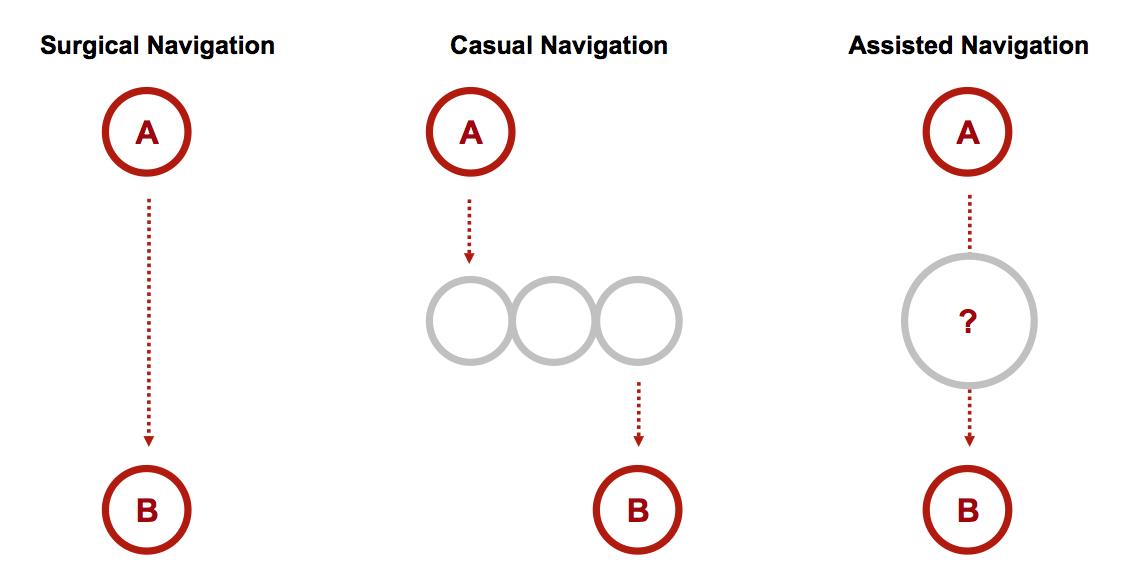If you ask kids today why phrases like “hang up” the phone or “roll down” the window exist, chances are they’ll have no idea. Fast-forward to the near future and “search the web” may also cause a few head scratches.
“We’re evolving, but remain electronic ‘hunters and gatherers,’” explained Ralph Lucci, cofounder and user experience director at Behavior Design.
But that’s about to change thanks to today’s quickly emerging artificial intelligence (AI) technology for practically every industry, including education. “The day will soon come when we’ll sardonically ask ourselves: ‘Remember when we had to visit a website and look around for what we needed?’ Now the data comes to us.”
And while mainstream AI isn’t at that level just yet, innovative industries and some schools are already either beginning to implement AI basics or planning to structure entire departments or services on the potential power of AI.
3 Reasons Why AI is Education’s Future
1. It will revolutionize the competition.
Almost every school or institution is currently vying for recognition among students that have become incredibly choosy consumers, and AI could be an effective way to stand out from the crowd, said Lucci.
“If an institution is embracing AI, students know there’s support and structure around these kinds of technologies and modernized learning; which is a good thing. Students will hold the school in higher regard and in turn the institution can attract more diverse and like-minded audiences, including professors and teachers! It’s a win-win situation.”
One of the more immediate ways Lucci sees AI working as a differentiator is via school portals or college and university websites. As he explains, AI provides a much different UX (user experience) than sites today are currently capable of.
According to Lucci, users consume online content in three ways–what behavioral designers call surgical, casual and assisted means. “Most websites employ solutions for quick access (surgical) and the ability to search, browse, and peruse (casual). The notion of guided (assisted) experience is typically only employed when necessary or relevant to the subject matter, e.g. wizards or calculators.” But Lucci noted that with the mainstreaming of AI, websites and portals will allow for this last tier to emerge as a means to simplify experiences and interfaces.
“It may begin as a complementary offering, much like a customer service representative or live chat agent, but eventually this strategy can be front and center in any interface,” he explained. “In either case, a simple “What can we help you with today?” can generate a response in many forms – whether that is a direct answer with next steps or a potential list of results/matches – that initiates a personalized path akin to a choosing-your-own adventure experience. Institutions can ‘test pilot’ AI and adjust accordingly after gleaning feedback about how it may best serve student and school goals.”
Next page: Can AI be personalized?
2. It will provide unprecedented personalization.
The inherent benefit of AI, said Lucci, is that it has the potential to be very user-centric, offering students the ability to get relevant answers or learn from anywhere at any time; not only from remote locations, but with one-on-one attention otherwise impossible in a large classroom.
It can also personalize a student’s entire learning lifecycle within the school or institution via what Lucci calls AI’s storytelling element. “With some simple input, AI mechanisms can assemble all sorts of narratives for students—about their future, job applications, and ways to make an impact down the road—to inform pursuits now that will lead to desired results. In these ways, AI is a guide for the student and can act as a concierge or an ambassador for an institution.”
Examples of personalized pathway guides include digital student guides for prospects and accepted students which provide checklists of what students need pre-application, how to connect with teachers, get housing, apply for financial aid, etc. “This helps craft an experience for future students before they even arrive on campus.”
In addition to directly benefiting students, AI also helps teachers to hone in on the desired learning pace for each student and plan accordingly, he said. Through AI, teachers can automate repetitive tasks (grading tests, answering questions about coursework, etc.), freeing them up to focus on bigger picture goals. “Additionally, response time to students becomes immediate and impactful; if a student doesn’t understand a topic, they can direct their questions to the system for a timely response rather than waiting for a teacher, which often takes some time.”
3. It will strengthen already lucrative programs.
Building off of its personalization potential, AI can also better support online learning programs, or what Lucci describes as “the most cost-effective business process an institution can implement, with the greatest return-on-investment.”
In regards to the personalization of programs like online or blended learning, Lucci said a major benefit of AI is the increasingly valuable feedback loop. “In a progressively competitive world, being able to monitor data and serve up relevant content is crucial. With richer data and improved data mining techniques, this is now a possibility. AI can steer inquisitiveness, enhance match-making, and present personalization. Many touchpoints in the [online] student-professor dynamic (answering common questions and automated, personalized follow-up) can now be done automatically and intelligently, improving the experience for both professor and student.”
Looking to the horizon
When asked whether or not schools or institutions are diving head-first into AI, Lucci (who works with notable institutions like the University of Michigan and the Cooper Union) said that, unsurprisingly, education is a bit behind other innovative industries currently beginning to implement basic “narrative question/answer” assisted navigation on their sites.
Lucci noted that unlike the technology and product companies he works with that have the staff and resources, education typically does not. “There are many necessary parts: technology; carefully crafted content around convergent and divergent audiences; strong stakeholder collaboration and commitment; and numerous maintenance needs, which can all be difficult challenges to secure, nurture, and unify. We often see an institution’s ambitious, flowering initiatives flourish in their own right—but the big-picture garden still needs structure and tending and cross-pollination.”
As AI becomes more mainstream, Lucci sees automated chatbots (e.g. a Siri-like assistant) taking hold in the near-term, allowing students to chat with a bot to answer simple questions instead of visiting a school’s portal or website, or calling or emailing. Students could also ask the bot about current grades, course information or how to submit a form.
On the heels of AI will come virtual and augmented reality, where AI will learn about a user’s specific interests and choices and work in parallel with VI/AR to create a personalized learning environment. Examples could include personalized virtual tours through a physical space, or a “choose your own adventure UX model where users can explore things like student life, events or classrooms.”
“The pace at which [AI] evolves will not be uniform, and with these variables comes another level of complexity and greater responsibility,” Lucci concluded. “AI may become more intimidating to students that may not be as technically savvy as others. Will this mean that students need proficiency in the use of technology to learn other skills? Might some fall behind their peers in new ways? These concerns might widen the gaps within cultural and socio-economic challenges. There are many things to consider and evaluate as AI evolves in all levels of the education space.”
- #4: 25 education trends for 2018 - December 26, 2018
- Video of the Week: Dealing with digital distraction in the classroom - February 23, 2018
- Secrets from the library lines: 5 ways schools can boost digital engagement - January 2, 2018






